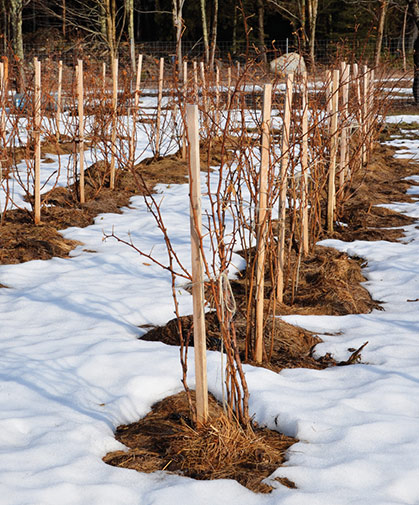Raspberries - Key Growing Information

SCIENTIFIC NAME:
Rubus spp.CULTURE:
Raspberries perform best in full sun, with good air movement and fertile, very well-drained soil. Raised beds are an option if your site is poorly drained. Raspberries prefer soil with a pH between 5.5 and 6.5.PLANTING:
Adequate spacing is important for best yields. Beds should be 2' wide, with paths between the beds a minimum of 8' wide. Space plants 18-24" apart in the row. For bare-root plants, spread the roots laterally from the stem and cover roots with 1/2-1" soil. For plug plants, transplant plugs deeply enough to cover plug soil with 1/2-1" garden soil. Irrigate well after transplanting and maintain good moisture levels until plants are well-established or for 4-6 weeks after transplanting.Proper soil moisture is important during the establishment-year and drip irrigation is the best method. Mulch to keep the soil evenly moist and to prevent weeds. Our Raspberry Planting Guide, included with each order, explains pruning and trellising, and contains information on specific diseases.

